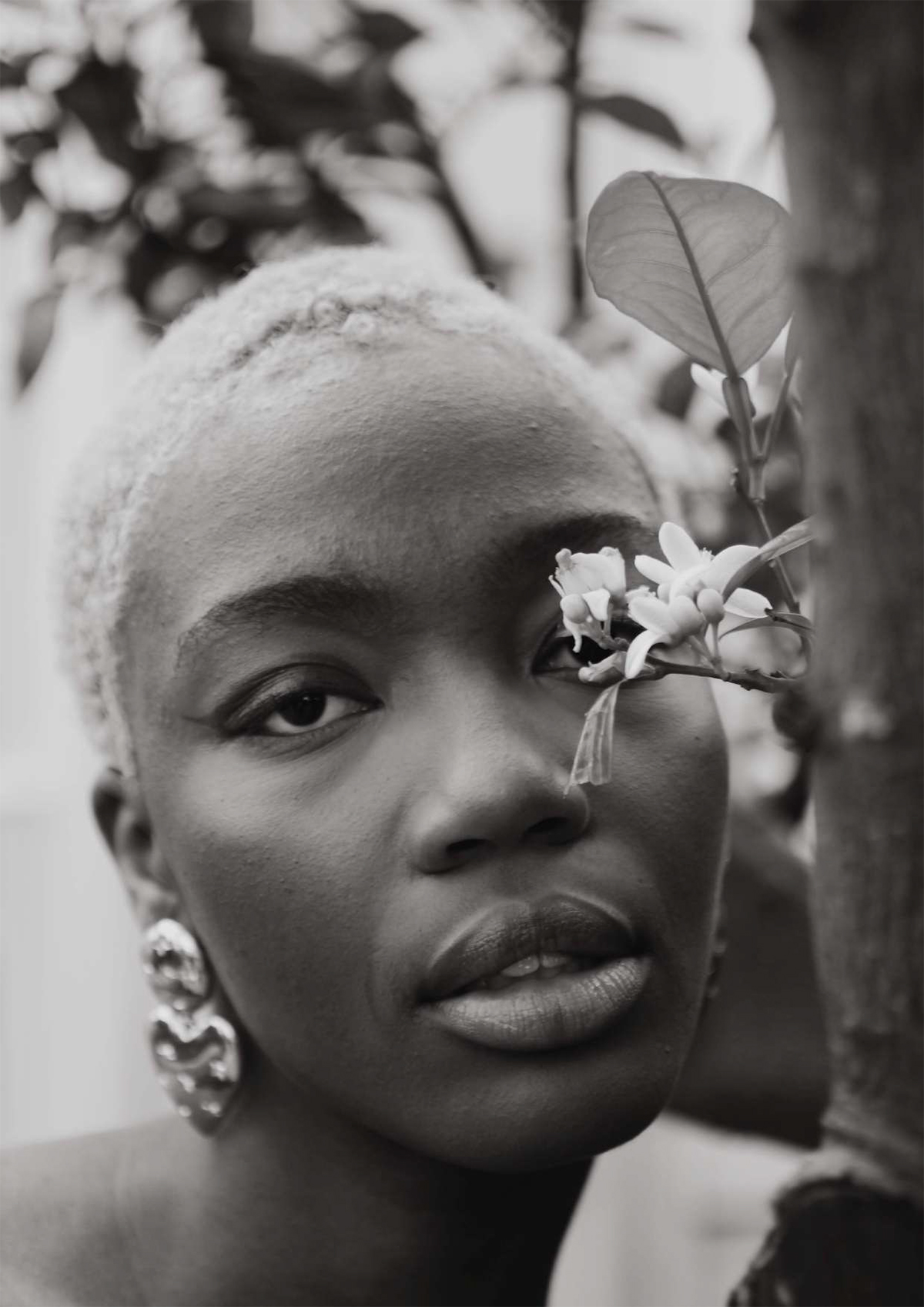Eloïse Atkins’ photography is in many ways delicate, yet there is a quiet confidence about her portraits. Far from simply making aesthetically pleasing fashion photographs, she weaves in interrogations of cultural and social themes, a theoretical element of her practice developed by her studies at London College of Fashion.
Her project masQ, for example, examined ideas around masculinity and aimed to remove stigmas and challenge stereotypes around how Black men are often portrayed in society. The idea behind the project was to create “a space to interpret sexuality, diversity, race, culture, and gender”, which she transformed into a compelling body of work.


While Atkins feels she has developed something of a style – one that shows a deft use of natural lighting – she never feels boxed in by making her images look a certain way. “I just go with the flow and I’ve always been like that,” she tells CR. “What I love to do is shoot outdoors and find interesting locations with interesting people in them.”
Atkins says she is eager to treat fashion and beauty photography as a medium for exploring race and ethnicity, since she grew up seeing “one type of model” that never resonated with her. “As the photography industry is dominated by men, I personally feel that as a young mixed female photographer, it is my job to represent diversity and be the change, even if it’s behind a camera.”


A notion that particularly struck a chord with Atkins comes from one of her favourite photographers, Dana Lixenberg: ‘Style mostly comes from how you perceive your environment and translate that to a photographic image; how you relate to and connect with your subject and what you decide to leave in or out of the frame.’ Meanwhile, the most useful piece of advice she has been given in relation to her photography is to go out and shoot as much as possible: “Anything and everything, expand and develop techniques, test out new ways of shooting. You can’t learn if you don’t make mistakes!”
Following this piece of advice has inevitably been a challenge in lockdown. Atkins has found the experience to be extremely difficult, impacting both her mental health (“not being able to go out and do what I love has been frustrating as I consider myself as an on-location shooter”) and her final year of university.
Aside from the abrupt end to her degree, which meant no proper goodbyes or a graduation ceremony, it also disrupted her final year project. It was meant to revolve around a trip to Mauritius to shoot her final major piece, which had been in the works since last November. “I felt that all of my hard work was disregarded and something that I was so passionate and looking forward to had just vanished,” she says. However, she has used the extra time to develop her skills and add more strings to her bow by experimenting with graphic and web design.

Atkins also plans to return to Mauritius in the future. “A dream project of mine would be to explore my Mauritian roots as a still and moving piece. I want to document the locals and my family members to bring light to the fact that Mauritius isn’t just a scenic place with beaches and luxury hotels, but introduce the struggle people face with hard labour and poverty,” she says.
“I want to bring light to the history of Mauritius and create a fusion of emotion through the hard-hitting and tough lyrics in Séga songs (which originated among the slave populations of Mauritius and was used as a vehicle to express their joys, sorrows and hopes) as well as a celebration of self-identification.”



“Using Séga as the key element for the project, it ultimately represents Mauritius as the dance and songs that are an emancipation of the soul and push the hardships and sufferings of life away,” she adds. “It’s sung as a cry to transcend the miseries, while at the same time expressing the desire for joy and happiness. I want to show visually how Séga is used to express these emotions and what it is actually known for,” Atkins adds.
For now, the photographer has been working on commissions for musicians to shoot album covers and behind the scenes material – including a BTS shoot for Joya Mooi’s Good Girl music video – and hopes to continue working on these kinds of projects along with developing her documentary photography. Her overall ambition is to be as free as possible as an artist without being tied down to a nine-to-five job, while also making a difference through visual communication: “I want to explore, travel the world and meet new people. I want to be constantly inspired to create.”

eloiseatkins.format.com; @esc.at
The post Gradwatch 2020: Photographer Eloïse Atkins, London College of Fashion appeared first on Creative Review.
from Creative Review https://ift.tt/3ljvoZ4

No comments:
Post a Comment